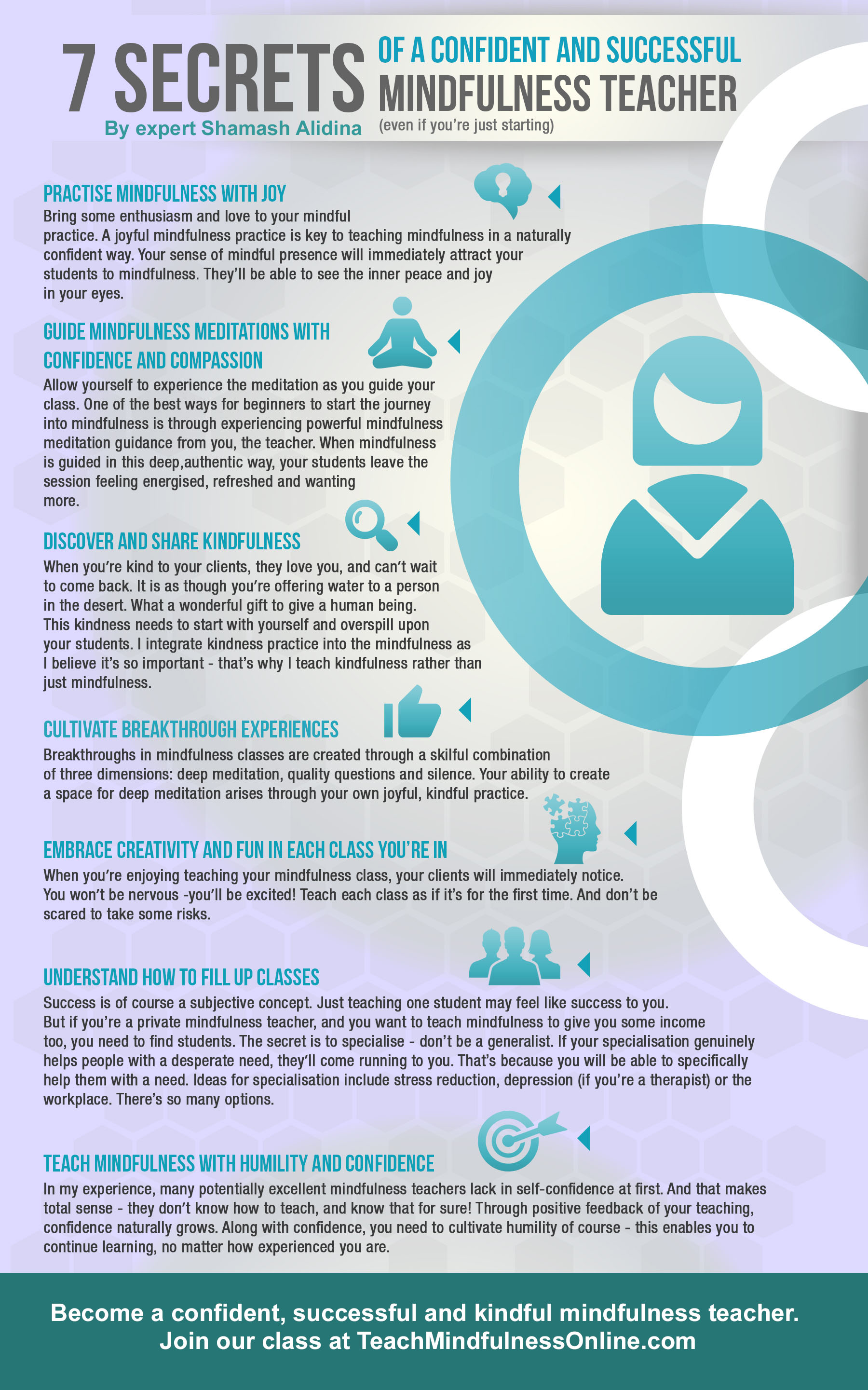What I’ve Discovered Teaching Mindfulness Over 20 years
/I first experienced a short mindfulness exercise when I was just a sweet little 20 year old. And I LOVED it.
I celebrated my 40th birthday yesterday, so I can easily calculate that I’ve been practising mindfulness for 20 years now!
Within a few months of learning mindfulness, I knew I wanted to spread this skill to every child and adult in the world. That would be my life’s work. I started my journey to teach and share mindfulness with others.
“I knew I wanted to spread this skill to every child and adult in the world.”
At that time I was a university student, studying Engineering. I started teaching classes in meditation using my position as President of the Student Industrial Society. The society was pleasantly surprised by these classes. We even invited guest speakers that specialised in meditation and mindfulness. The students loved it.
Twenty years ago, there were very few meditation teacher training programs. I had to pick up my skills on the job, learning from the more experienced teachers around me, and making new concepts to explain mindfulness as I went along.
Fast forward to about 10 years ago, and mindfulness trainings started springing up in universities and colleges. I spent thousands of pounds and hundreds of hours training with all the best teachers I could find. I discovered the best teachers were monks and nuns - not necessarily university professors.
“I spent thousands of pounds and hundreds of hours training with all the best teachers I could find.”
Eventually, people started to ask me to teach them what I had learnt. My students wants to share the skill of mindfulness, just as I did.
I decided to start slowly. One to one. But as demand increased, I stumbled upon the idea of training to teach mindfulness online. A crazy idea at first, but being a cheeky experimenter and scientist at heart, I decided to give it a go. The project was a huge success with very high positive feedback, and it grew and grew. I put all my heart and energy into my Teach Mindfulness program.
I’ve now had the priviledge to develop my unique online mindful and kindful training program that has trained hundreds of mindfulness (and kindfulness) teachers, who have gone on to teach thousands of students. A thought I’m really proud of.
Today I’d like to share with you what I’ve discovered about what makes a successful mindfulness teacher in my observation. What I call the 7 secrets of the successful and confident mindfulness teacher.
Please share this infographic with your friends - becoming a better teacher is something we all strive for
1. Practice mindfulness with joy - Bring some enthusiasm and love to your mindful practice. A joyful mindfulness practice is key to teaching mindfulness in a naturally confident way. Your sense of mindful presence will immediately attract your students to mindfulness. Theyʼll be able to see the inner peace and joy in your eyes.
2. Guide mindfulness meditations with confidence and compassion - Allow yourself to experience the meditation as you guide your class. One of the best ways for beginners to start the journey into mindfulness is through experiencing powerful mindfulness meditation guidance from you, the teacher. When mindfulness is guided in this deep, authentic way, your students leave the session feeling energised, refreshed and wanting more.
3. Discover and share Kindfulness - When youʼre kind to your clients, they love you, and canʼt wait to come back. It is as though youʼre offering water to a person in the desert. What a wonderful gift to give a human being. This kindness needs to start with yourself and overspill upon your students. I integrate kindness practice into the mindfulness as I believe is so important - that’s why I teach kindfulness rather than just mindfulness.
4. Cultivate breakthrough experiences - Breakthroughs in mindfulness classes are created through a skilful combination of three dimensions: deep meditation, quality questions and silence. Your ability to create a space for deep meditation arises through your own joyful, kindful practice.
5. Embrace creativity and fun in each class youʼre in - When youʼre enjoying teaching your mindfulness class, your clients will immediately notice. You wonʼt be nervous ‒ youʼll be excited! Teach each class as if it’s for the first time. And don’t be scared to take some risks.
6. Understand how to fill up classes - Success is of course a subjective concept. Just teaching one student may feel like success to you But if you’re a private mindfulness teacher, and you want to teach mindfulness to give you some income too, you need to find students. The secret is to specialise - don’t be a generalist. If your specialisation genuinely helps people with a desperate need, theyʼll come running to you. That’s because you will be able to specifically help them with a need. Ideas for specialisation include stress reduction, depression (if you’re a therapist) or the workplace. There’s so many options.
7. Teach mindfulness with humility and confidence - In my experience, many potentially excellent mindfulness teachers lack in self-confidence at first. And that makes total sense - they donʼt know how to teach, and know that for sure! Through positive feedback of your teaching, confidence naturally grows. Along with confidence, you need to cultivate humility of course - this enables you to continue learning, no matter how experienced you are.
“One interesting personal observation I’d like to highlight is this: the best teachers start off with very little confidence.”
The student teachers doubt in their abilities to teach mindfulness. My approach is to just give lots of praise to them together with the skills training. I don’t think much can be learnt through criticism except self-judgment and loss of motivation.
I’m proud to say these teachers end up gradually building their confidence and becoming powerful teachers, offering unique programs, deeply touching the lives of both their students and themselves. I’ve met several of them in person too, and they are absolutely brilliant. Probably a better teacher than I am!
“If you lack confidence to share mindfulness... you’re in a great place!”
Most of you probably aren’t mindfulness teachers, but I bet you like mindfulness. And I reckon you’ve all had moments when you want to share mindfulness with others - by recommending an app, a teacher, a blog, a book or maybe even tried to guide a little mindfulness exercise.
This post or our training is for you too. You don’t have to become a professional mindfulness teacher to benefit from learning this vital skills, to spread more peace, love and joy from the inside out.
Conclusion
Over my 20 years of experience teaching mindfulness, I’ve discovered keys to what makes a successful mindfulness teacher. Some of the more unusual ones include:
- Low initial confidence helps to grow humility and ends up developing some of the best mindfulness teachers.
- Joyfulness and playfulness are a vital part of teaching mindfulness, which is often disregarded.
- As you grow in experience, plan less and be alive to the needs of the beautiful human beings in front of you. Most programs obsess with planning. Not a good idea. When you plan less, you’re not just talking mindfulness...you’re living mindfulness.
Do leave a comment with your thoughts. I do promise to read and reply to them all!



